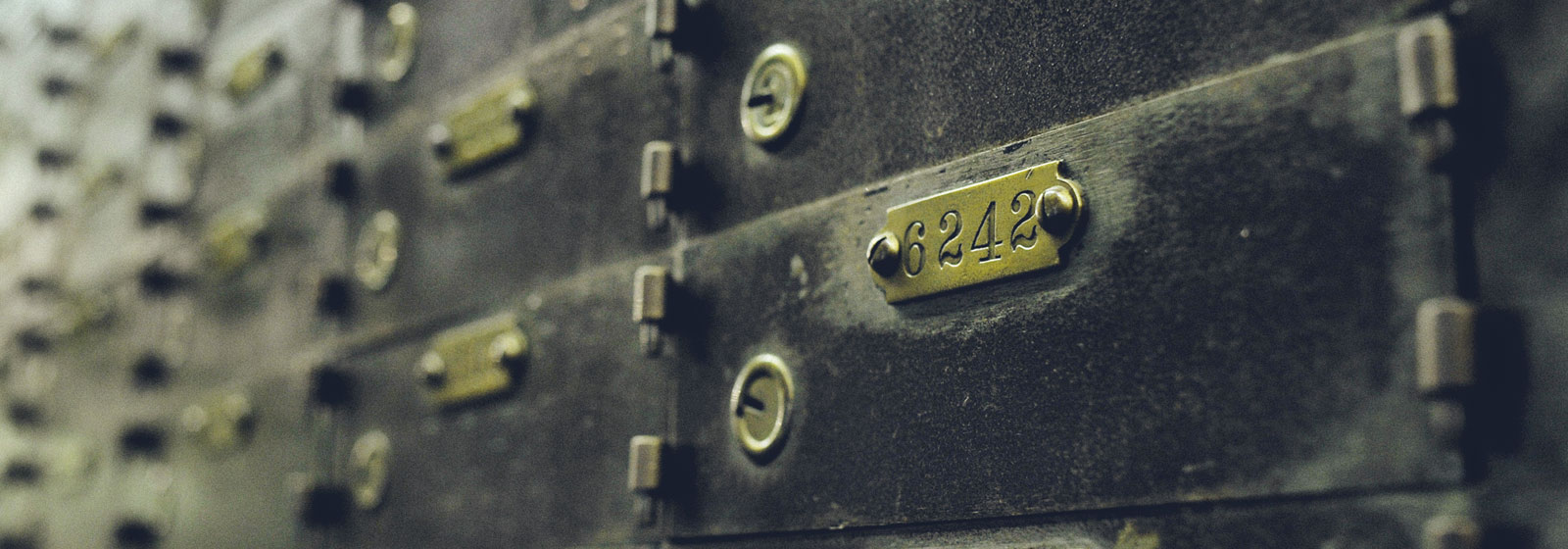A History of Vaults & Storage
At The Royal Mint, our own vaults are used to store precious metals and coinage, but there are numerous vaults around the world, with a wide array of uses and spectacular locations.
Three Unusual Vaults
One of our first unusual vaults is operated by fast food chain KFC at their headquarters in Kentucky. That particular vault doesn’t house money or precious metals, but instead, it is used to safely protect the company’s secret recipe, consisting of a mixture of herbs and spices for their original fried chicken.
Another example refers to an abandoned mine in Germantown, New York, which was once used for mushroom farming. However, at the height of the Cold War, a private security firm spotted a gap in the market. The Iron Mountain Vault was opened to provide corporate clients with a secure storage facility to accommodate their most important documents. The vault would be safe, even in the event of a nuclear attack, and is still in use today.
Our last unusual vault is located within the Arctic Circle on the island of Svalbard. This plays host to a vault that is used for a different purpose altogether – the Svalbard International Seed Vault. This is intended to store a huge selection of seeds, ensuring that human beings should always have a food supply, no matter what catastrophes occur on the planet.
The History of Vaults
The history of vaults can be traced back thousands of years. The necessity to protect money and belongings led to locks being developed by the ancient Egyptians, with more sophisticated mechanisms being created by the Romans. Over time, increasingly impressive safes were made available. By the early 20th century, safes were being replaced by vaults in many banks.
Throughout the history of bank vaults, there has been a need to battle against technological developments. Early vaults were accessed via steel doors, which could be cut open using torches that generated enormous levels of heat.
Modern vaults tend to use concrete doors (which are often steel plated), helping to offer an improved level of protection. One of the world’s best known vaults is at Fort Knox, in the United States. On the site of a US Army base, a large proportion of America’s gold reserves are stored in a highly secure environment.
The Royal Mint's Secure Storage
Our own vault (known simply as The Vault) builds upon more than 1,000 years of safeguarding the nation’s coins, together with the very latest security systems. Located in South Wales, The Vault, was constructed in 1986 and is guarded by trained security staff around the clock. It is one of the UK's most secure storage facilities and it is used by many to store and protect their Royal Mint investments.
Although our own vault is certainly sizeable, it may not quite be the largest such installation in the UK. Reports suggest that the Bank of England vaults hold 20% of the world’s entire gold store, amounting to somewhere in excess of 5,000 tonnes. At current market values, this would value gold stores within the Bank of England’s vaults at an eye-watering £170 billion.
The Bank of England
The vaults at the Bank of England were constructed prior to the Second World War and are protected by advanced security systems, as might be expected. But it’s interesting to note that part of the security safeguards involves using plain old keys, which are 3 feet long. It appears that those traditional keys are thought to add an extra layer of protection, over and above the electronic systems that are in place.
Having been constructed upon a base of clay, the Bank of England’s vaults have to be used with some caution. Gold bars can’t be stacked too high, otherwise they would simply cause the vaults to sink into the clay below.
Gold Storage in London
Elsewhere in London, it’s believed that a further 6 commercial gold vaults are in existence, with a number of them being in the area surrounding Heathrow Airport. There is great secrecy surrounding the exact locations of vaults and understandably so, given their attraction to robbers. Back in 1983, £26 million worth of gold was stolen from a Heathrow industrial estate in a raid that is still the biggest armed robbery to be carried out in the UK. Remarkably, the proceeds of the Brinks Mat robbery are still to be recovered.
In total, London’s vaults are thought to hold in excess of 6,500 tonnes of gold, with gold being stored on behalf of banks, governments, investment funds and private collectors. The next time that you find yourself walking the streets of London, you may find that bars of gold are just a few feet below those same pavements.





